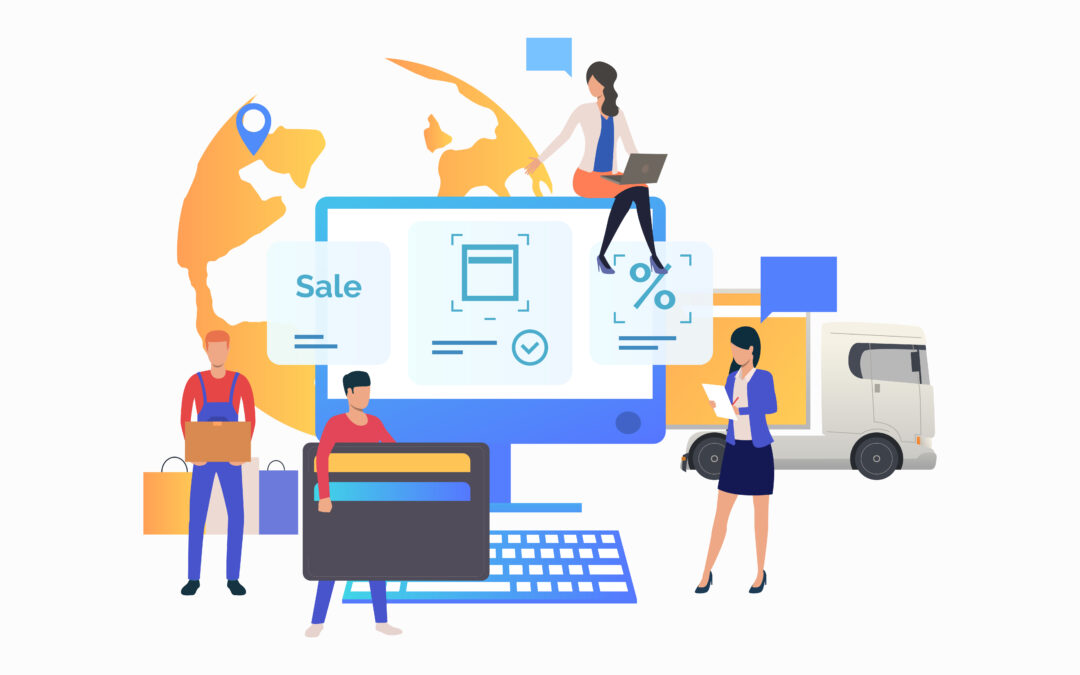In today’s digital age, manual procurement processes are quickly becoming obsolete. If your organization still handles procurement with spreadsheets, emails, and endless phone calls, you’re likely facing delays, errors, lack of transparency, and rising costs. That’s where procurement management software comes in — a digital tool designed to streamline and optimize every stage of your procurement workflow.
Whether you’re a small business or a large enterprise, the importance of having a centralized, automated, and data-driven procurement system cannot be overstated. In this article, we’ll explore why procurement management software is more than just a convenience — it’s a strategic asset for any growing organization.
Table of Contents
- What Is Procurement Management Software?
- Why Is Procurement Important in Business?
- Key Features of Procurement Management Software
- Top 10 Benefits of Procurement Management Software
- How Procurement Software Supports Strategic Sourcing
- Procurement Software vs. ERP Systems: What’s the Difference?
- Cloud-Based vs. On-Premise Procurement Solutions
- Best Procurement Management Software in 2025
- How to Choose the Right Procurement Management Software
- Real-World Case Studies: Procurement Transformation in Action
- Conclusion
What Is Procurement Management Software?
Procurement management software is a digital solution that automates the process of acquiring goods and services for an organization. It facilitates various procurement activities such as:
- Vendor management
- Purchase requisitions
- Purchase orders
- Contract management
- Invoice processing
- Spend analysis
This software acts as a central hub where all procurement activities are tracked, approved, and managed in real time. It provides transparency, enhances collaboration, and ensures compliance with internal policies and external regulations.
Popular tools like Coupa, SAP Ariba, Oracle Procurement Cloud, and Zoho Procurement are widely used across industries, helping companies reduce inefficiencies and gain a competitive edge.
Why Is Procurement Important in Business?
Procurement isn’t just about buying things; it’s about making strategic decisions that impact every aspect of your business — from cost savings and supplier relationships to supply chain resilience and regulatory compliance.
When handled well, procurement can:
- Cut down costs significantly
- Reduce supply chain risks
- Improve service delivery
- Increase operational efficiency
- Boost vendor performance
On the flip side, poor procurement practices can result in:
- Budget overruns
- Missed deadlines
- Compliance violations
- Poor-quality goods or services
That’s why automating your procurement process with robust software is a necessity, not a luxury.
Key Features of Procurement Management Software
Not all procurement software is created equal. However, here are some must-have features that top-rated platforms typically include:
1. Purchase Requisition Management
Streamlines request submission, approval workflows, and authorization protocols.
2. Automated Purchase Orders
Generates accurate purchase orders automatically with customizable templates.
3. Supplier Management
Enables onboarding, evaluation, and rating of vendors to ensure consistent performance.
4. Contract Lifecycle Management
Tracks the full lifecycle of vendor contracts and ensures legal and compliance alignment.
5. Invoice Matching
Automatically matches invoices to purchase orders and delivery receipts to prevent overpayments or fraud.
6. Spend Analysis and Reporting
Offers real-time dashboards and analytics to help you track spending and identify cost-saving opportunities.
7. Approval Workflows
Allows setting multi-level workflows based on role, department, or threshold limits.
8. Integration Capabilities
Integrates with accounting software, ERP systems, and CRMs for a seamless data flow.
9. Mobile Accessibility
Enables remote approval, tracking, and notifications through mobile apps.
10. Audit Trails
Logs all activities for easy audits and compliance verification.
Top 10 Benefits of Procurement Management Software
Here’s how procurement management software can revolutionize your organization:
1. Streamlined Processes
Automates repetitive tasks and reduces manual errors, saving time and effort.
2. Enhanced Visibility
Provides real-time insights into procurement activities across departments and regions.
3. Cost Savings
Enables better budgeting, bulk purchase planning, and supplier negotiation using data analytics.
4. Improved Compliance
Tracks procurement activities to ensure policy and regulatory compliance.
5. Better Supplier Relationships
Helps manage and evaluate vendors consistently, leading to long-term partnerships.
6. Centralized Documentation
Eliminates paper trails and makes it easy to retrieve procurement documents instantly.
7. Real-Time Collaboration
Facilitates communication between internal teams and suppliers via shared dashboards.
8. Reduced Maverick Spending
Enforces use of approved vendors and standardized procurement procedures.
9. Scalability
Grows with your business and adapts to changing procurement needs.
10. Faster Decision-Making
Provides actionable data insights that drive informed procurement strategies.
How Procurement Software Supports Strategic Sourcing
Strategic sourcing is a data-driven approach to managing supplier relationships and procurement activities. Procurement software helps in:
- Analyzing vendor performance over time
- Comparing supplier quotes efficiently
- Ensuring quality compliance
- Identifying alternative suppliers in case of disruption
- Conducting RFIs, RFQs, and RFPs within a single platform
Platforms like GEP SMART and Jaggaer specialize in strategic sourcing and give you a bird’s-eye view of your supplier ecosystem.
Procurement Software vs. ERP Systems: What’s the Difference?
You might wonder: “Can’t my ERP system handle procurement?”
While ERP systems do offer procurement modules, they are often limited in scope and flexibility. Dedicated procurement software provides:
- Deeper functionality specific to sourcing and purchasing
- Greater customization in workflows and approvals
- Advanced analytics for spend visibility
- Improved vendor management tools
If procurement plays a central role in your operations, investing in a standalone procurement platform is a smarter choice.
Cloud-Based vs. On-Premise Procurement Solutions
When choosing procurement software, deployment is key.
Cloud-Based Software
- Lower upfront cost
- Faster implementation
- Automatic updates
- Scalable and flexible
- Ideal for remote teams
Examples: Precoro, Procurify, Kissflow
On-Premise Software
- More control over data
- Customization options
- Higher security (for sensitive industries)
- Requires in-house IT team
Examples: SAP SRM, Oracle E-Business Suite
Most businesses today prefer cloud-based solutions due to ease of use and scalability.
Best Procurement Management Software in 2025
Here’s a curated list of top procurement management tools in 2025:
| Software | Best For | Website |
|---|---|---|
| Coupa | Large enterprises with complex supply chains | www.coupa.com |
| ProcurementExpress.com | Small to mid-sized businesses | www.procurementexpress.com |
| Precoro | Fast-growing companies | www.precoro.com |
| Kissflow Procurement Cloud | Process automation lovers | www.kissflow.com |
| Zoho Procurement | Startups and small teams | www.zoho.com |
| SAP Ariba | Global enterprises | www.ariba.com |
| Oracle Procurement Cloud | Companies already using Oracle ERP | www.oracle.com |
| GEP SMART | Strategic sourcing and analytics | www.gep.com |
How to Choose the Right Procurement Management Software
When selecting the best software for your organization, consider the following:
- Budget – What can you realistically afford?
- Scalability – Will it grow with your business?
- User Interface – Is it user-friendly for non-tech users?
- Integration – Does it connect with your existing tools?
- Customer Support – Is help available when needed?
- Security & Compliance – Does it meet your industry standards?
- Customization – Can you adapt it to your workflow?
Always request a demo or trial before making a final decision.
Real-World Case Studies: Procurement Transformation in Action
Case Study 1: Coupa + Unilever
Unilever integrated Coupa to digitize their procurement. Result? A 20% reduction in procurement cycle time and improved supplier visibility across 190 countries.
Case Study 2: Kissflow + Domino’s India
Domino’s automated its entire purchase order process using Kissflow. This led to quicker approvals and standardized vendor onboarding.
Case Study 3: Precoro + Givaudan
Givaudan cut down operational costs by 15% after switching from spreadsheets to Precoro. Real-time spend analysis enabled better strategic planning.
Conclusion
In an era where agility, efficiency, and data intelligence rule business success, procurement management software is no longer a “nice-to-have” — it’s a must-have. From minimizing errors and reducing costs to improving supplier relationships and ensuring compliance, this software is a game-changer.
Whether you’re a small startup or a Fortune 500 company, embracing procurement technology is a step toward smarter business decisions and long-term growth.
So, stop wasting time on outdated manual processes and invest in a modern procurement management solution today.






